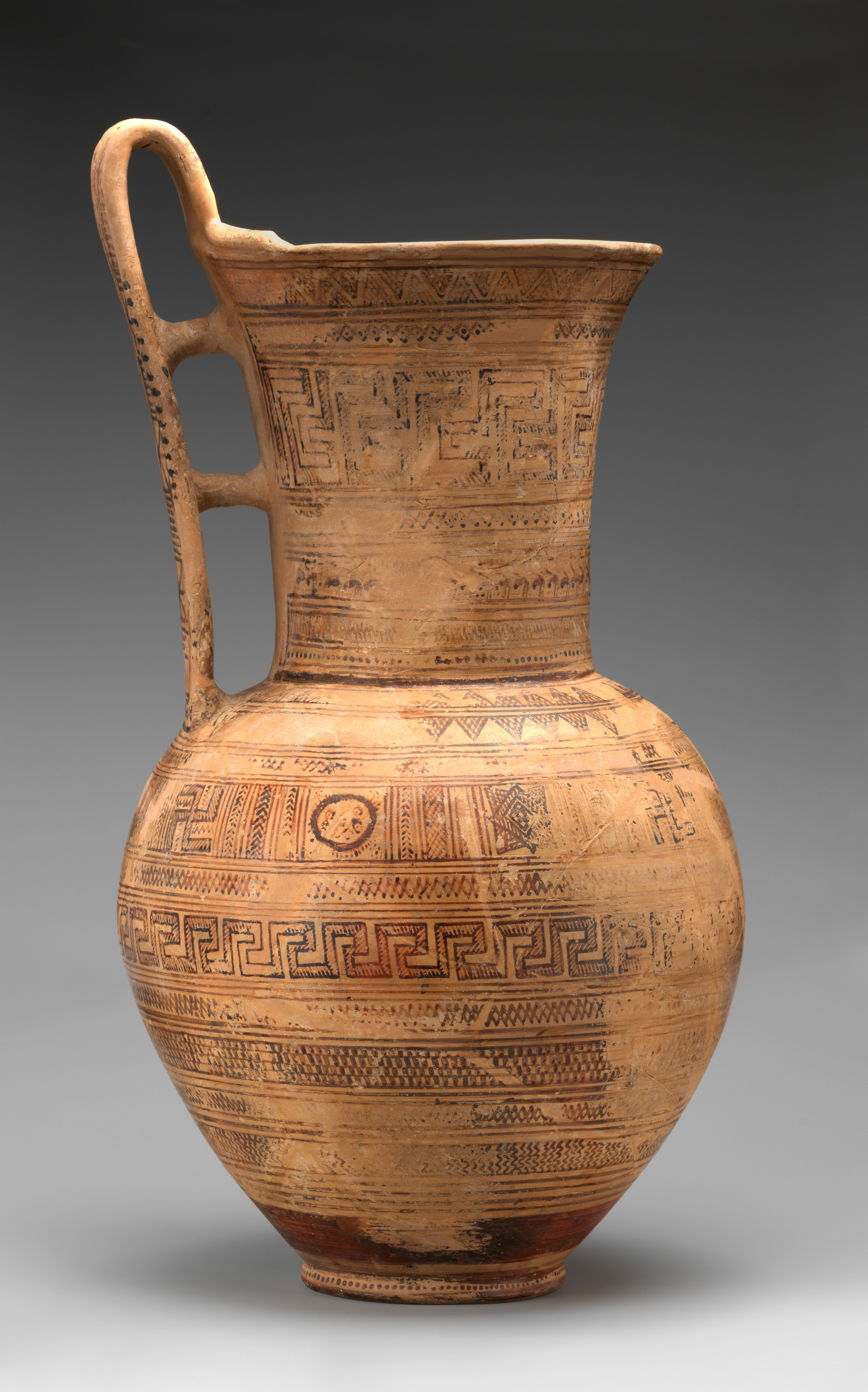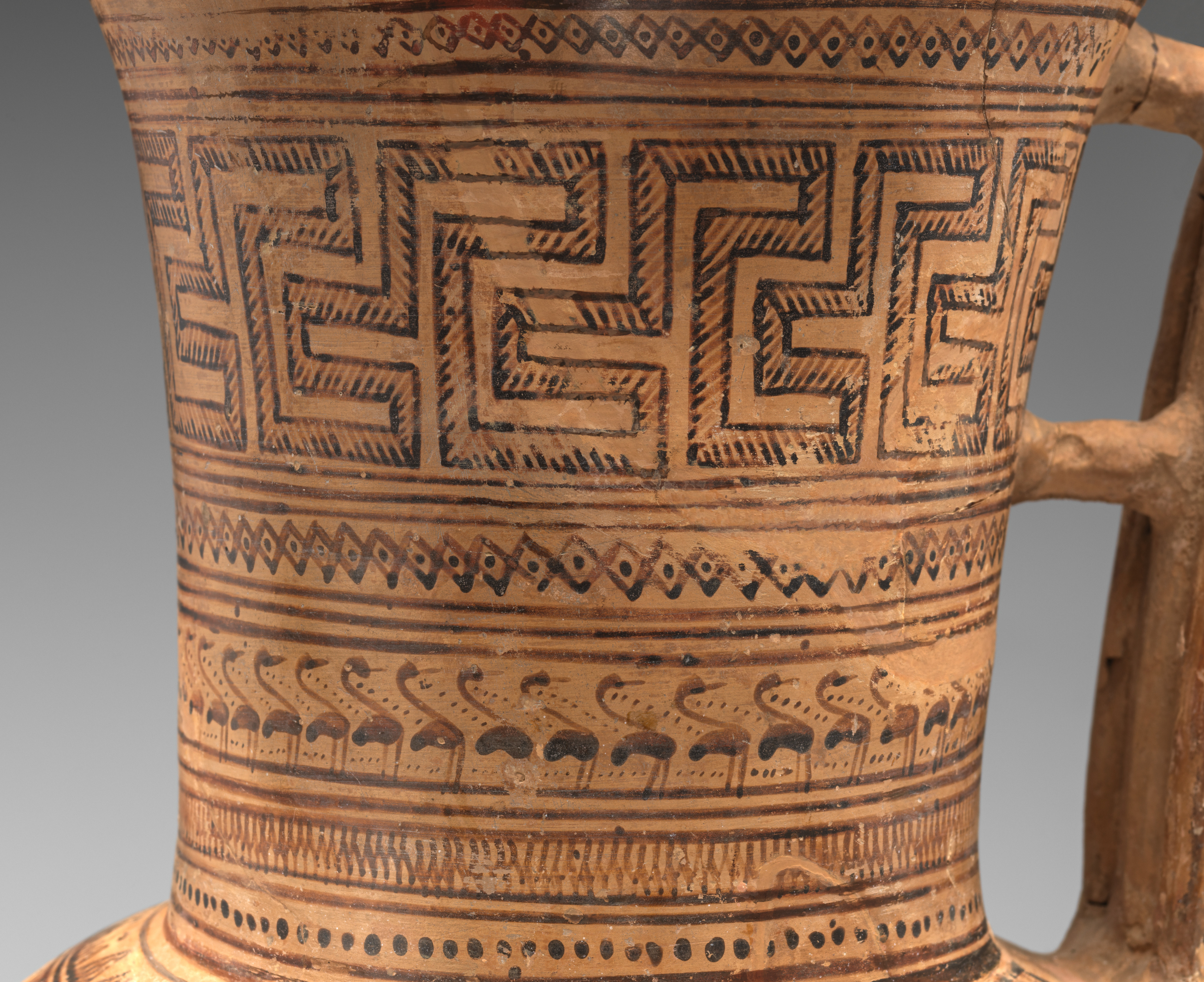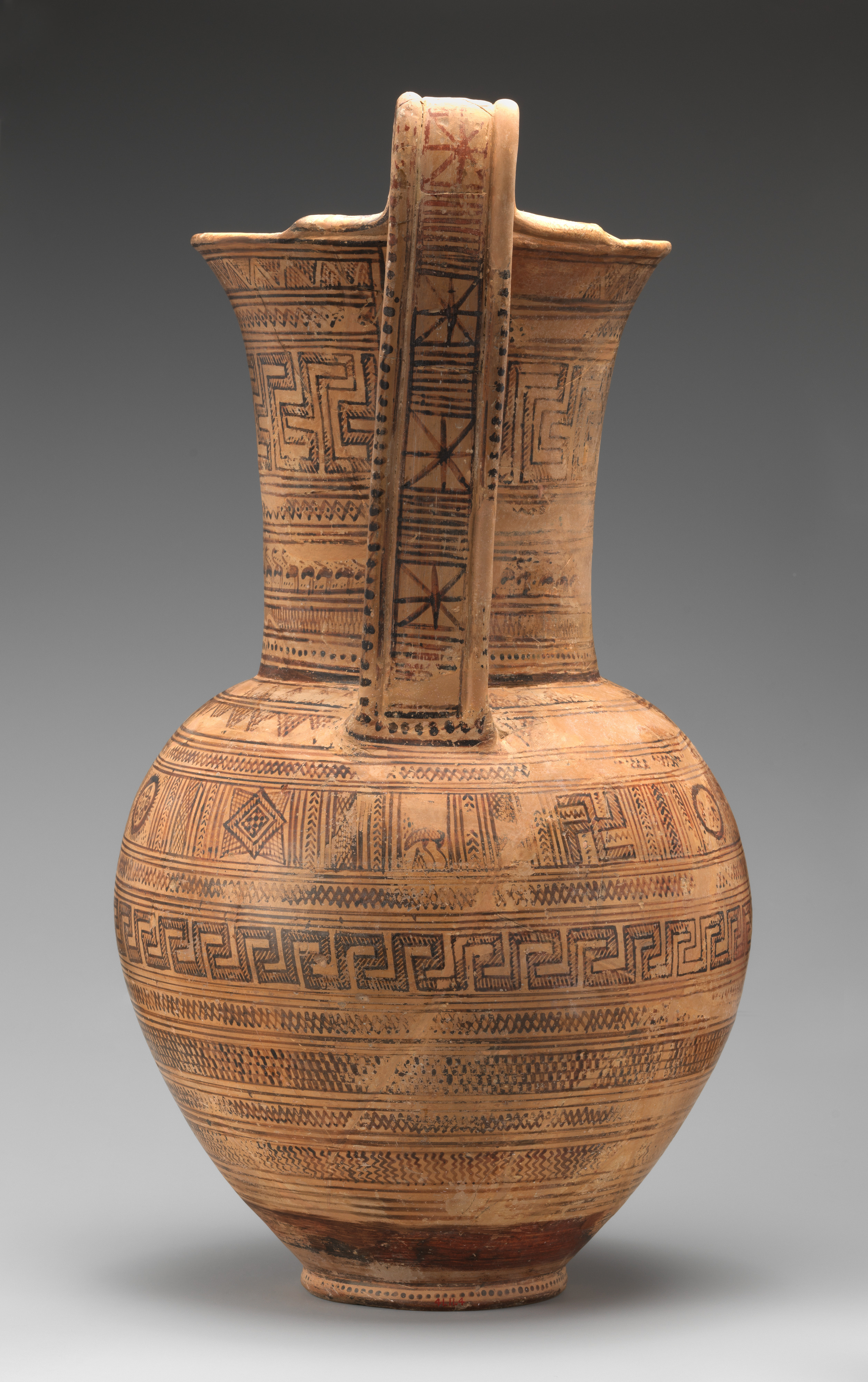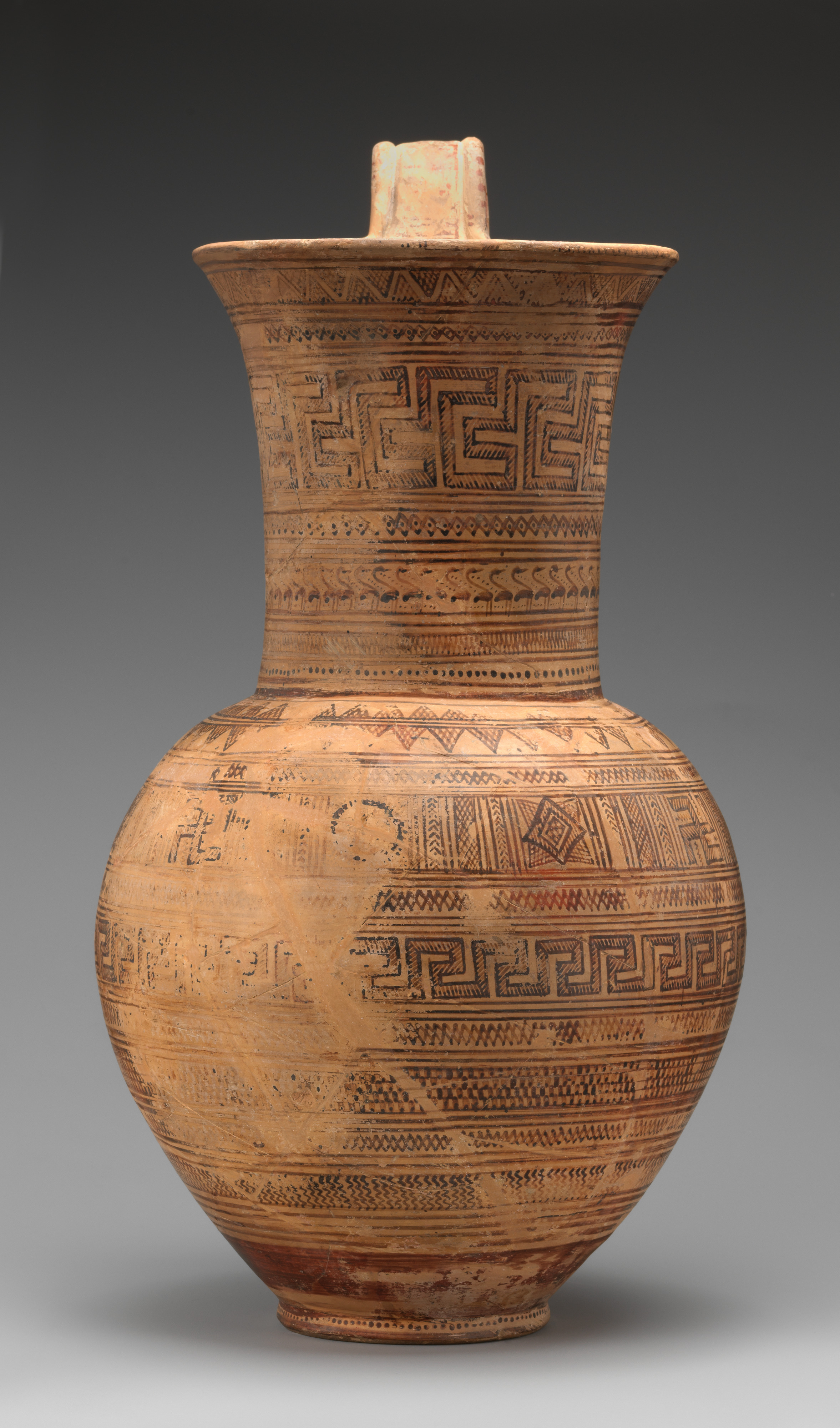Terracotta pitcher
During the Geometric period, funerary customs in Athens reflected a taste for distinction and display involving oversize, high-quality vessels. Monumental vases, according to their various shapes, could be used as cinerary urns (for the ashes of the deceased), burial markers, ritual containers, and symbolic offerings expressing social status, social relationships, and gender.
Characterized by a globular belly, a gracefully curved high neck and a single vertical handle, monumental pitchers, such as this one, were a new shape of the Late Geometric style in Athens. They were found in both men’s and women’s graves and may have been used in rituals involving water. The wide mouth is more suitable for washing than serving drinks. This vase is attributed to the Birdseed Painter, named after the diagonal row of dots painted along his birds’ necks.
This image cannot be enlarged, viewed at full screen, or downloaded.
This artwork is meant to be viewed from right to left. Scroll left to view more.







